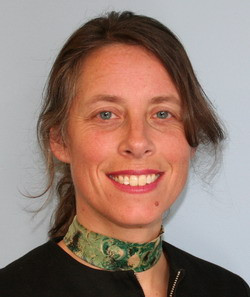A large study of six communities affected by the 2010 and 2011 Christchurch earthquakes has found that those with strong social connectedness and infrastructure before the earthquakes struck developed a ‘virtuous circle’ that helped people better adapt after the disasters.
The ‘Building community resilience: Learning from the Canterbury earthquakes’ study involved researchers from the Canterbury District Health Board, Mental Health Foundation, Otago University, and public health research firm, Quigley and Watts Ltd. It was jointly funded by the Health Research Council of New Zealand and Canterbury Medical Research Foundation as one of five projects looking into the health implications of the earthquakes.
The study found that connected communities with strong pre-existing infrastructure (e.g. community-based organisations, iwi, marae, leaders), and a comprehensive local disaster response, were well placed to adapt after the earthquakes. Some participants said their communities continued to feel energised by a post-earthquake ‘culture of possibility’.
Marae participants highlighted the key role of marae as hubs for providing emergency support and hospitality. The emphasis of marae on manaakitanga – hospitality and caring – helped them mobilise quickly and offer support to the whole community.
In contrast, in communities and groups without sufficient infrastructure or external support, residents remained relatively isolated and less able to overcome earthquake-related problems. The report states that in some cases, “a negative spiral of adversity, anxiety, depression, fatigue and social withdrawal” appeared to have developed.
Researchers interviewed more than 90 Christchurch community leaders and residents for the study, 15 to 17 months after the destructive February 2011 earthquake. The six case studies focused on Lyttelton; Shirley; Inner City East; marae communities; migrant and refugee communities; and Christchurch Community House (a workplace community).
Lead investigator Louise Thornley, Senior Research Associate at Quigley and Watts Ltd, says the research highlights the key role of community-led action, community development and informal social networks in strengthening the resilience of communities.
“Communities in Canterbury were vital in the disaster response. Beyond the initial emergency phase, community organisations continued to play a key role in connecting people, for example, through community and memorial events; disseminating information; collectively solving problems; creative arts initiatives; and advocating on behalf of their communities,” says Ms Thornley.
Many community leaders and residents said that external agencies had also played a key role in supporting communities with response and recovery efforts.
However, Ms Thornley says there were a number of barriers to increasing community resilience.
“Some participants reported that they weren’t aware of community initiatives or didn’t have the energy or ‘headspace’ to participate in them because of ongoing earthquake-related problems. Community support was also of little benefit to those forced to move away from their neighbourhood. Some communities and groups reported a sense of collective powerlessness and stress in dealing with continuing hardship from the earthquakes and its after-effects.”
Many participants said that their communities wanted to be involved in the earthquake recovery, and to help plan for the future.
Some felt that engagement between authorities and communities needed to improve. They wanted officials to listen more to community perspectives, to explain the rationale behind decisions made, and to support the community to meet local needs.
The researchers have made 15 recommendations to help build community resilience, including:
- build strong, empowered communities through community-led action
- carry out community-level planning and preparedness for disasters and other crises, building on existing community strengths (e.g. develop household databases and community skill databases to match needs and skills)
- promote volunteering and the ‘know your neighbours’ message
- develop strong partnerships between authorities and communities
- post-disaster, ensure the ongoing Canterbury earthquake-recovery process is community-driven, where communities and iwi identify their own needs and solutions, and authorities enable and support local initiatives
- work collaboratively on strategies to support displaced people (e.g. addressing housing shortages, with the aim of rehousing people within or close to their own community, if desired or possible)
- encourage, resource and support the development of community infrastructure (e.g. local organisations, iwi, marae, leaders, networks and facilities)
- in a disaster context, ensure there is two-way communication with communities over time (especially face-to-face), explain the rationale behind official decisions and actions, and recognise that community priorities may be different from those of government agencies.
The report can be accessed at www.quigleyandwatts.co.nz.
